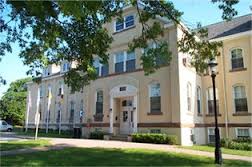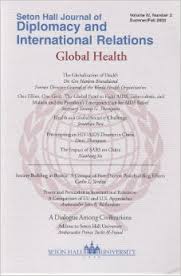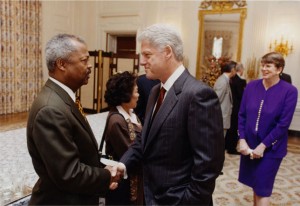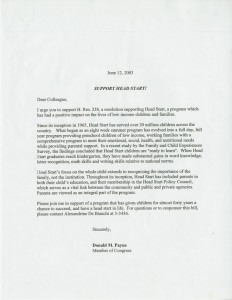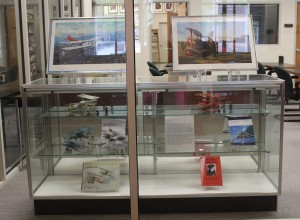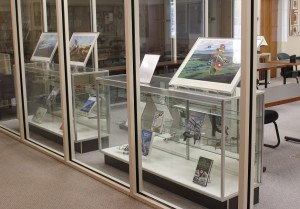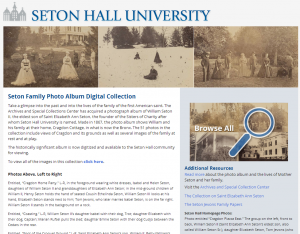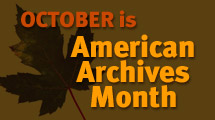 So you have an assignment to use the Archives. Where is it located? How is using the Archives different from using regular library materials? How do you get going?
So you have an assignment to use the Archives. Where is it located? How is using the Archives different from using regular library materials? How do you get going?
First, determine what your assignment asks you to do. Are you to find something specific in the Archives, or are you to choose a topic related to one of our collecting areas and come in to use the materials to research that topic for a paper or presentation in your class? Basically, we collect materials that maintain the history of Seton Hall University and of the Archdiocese of Newark. This includes papers of presidents, colleges, schools, departments and publications of Seton Hall as well as papers of bishops and archbishops, priests, parishes and offices of the Archdiocese. So could you come in and ask for materials on atomic energy? No, but you might be interested in student reaction to the dropping of the bomb on Hiroshima, and ask if the Setonian published during WWII and might have covered it.
Could you ask to see books on the American Civil War or the 1916 Rising in Dublin, Ireland? Yes, but first you would want to limit your topics, and search on the Library website for key words that would lead you to books in that specific area. You might pick a particular battle in the Civil War such as Antietam, or a certain figure in the 1916 Rising like James Connolly. Search for titles, and any that say Archives, gather the references including title, author and call number. If you need help with the search process, a reference librarian may be able to help, or contact one of our staff at (973) 761-9476 or archives@shu.edu.
To use the materials you need to make an appointment either in person, by phone or by email. Once we know what materials you need, and when you want to come in, we can get those materials from the vault, and have them ready for you in the Reading Room. We are open Monday – Friday, 9am – 5pm. Our materials do not circulate, so must be used in our Reading Room on the ground floor of Walsh Library, past the Beck Rooms, opposite the Gallery. Once here, you will need to store coat, bags and all materials in the front of the room. You may have paper and pencil [we provide pencils; no ink is allowed in the Archives as it might leave a permanent mark on archival materials.] and/or your laptop with you for taking notes. Our materials are old and fragile, and must be used with great care. No food or drink is allowed in the Reading Room. Cell phones can be used in the hallway outside. We have a photocopier available; most copies are $.10, payable in cash – we do not have a card reader. You will be provided with white cotton gloves if you are looking at photographs or negatives. By prearrangement, you may be allowed to photograph materials with digital camera or phone without flash.
Once you have your topic and a list of resources, make your appointment and begin your research. It’s fun and easy. We look forward to your visits!
 October is Archives Month in the United States, but it also coincides with International Celebration month observances on campus. In the spirit of documentary preservation and global appeal alike, the presence of cultural diversity at Seton Hall has been a prime part of school history as the institution has hosted numerous students from all corners of the globe from its founding in 1856 to the present day. From a historical perspective, the sons (and later daughters from 1937 onward) of first and second generation Americans comprised the majority of student representation at Setonia especially during the formative years of the school and geographical transition from its first home in Madison to the present site in South Orange. Additionally, adolescents from neighboring countries formed part of this tradition in the making. For example, the first student outside of American borders to make his mark in the registration ledger was Ernesto Regil of Merida, Yucatan, Mexico who enrolled at Seton Hall College in 1856. He was the 20th enrollee overall and he shared the first-hand experience of life on the Setonia campus with those who traced their ancestry back to Ireland, France, England and other European locales. Ernesto was followed the next year by other townsfolk from Merida including Joseph Gutierez, Francisco Plana, Lorenzo Peon, and Miguel Peon with the later two gentlemen being the first brothers from abroad to attend the school simultaneously. These trailblazers were followed by others from Cuba, Spain, France, Venezuela, and “Porto Rico” over the next three years. This success marked a steady trend of student émigrés who continued to attend Seton Hall over the next century and a half.
October is Archives Month in the United States, but it also coincides with International Celebration month observances on campus. In the spirit of documentary preservation and global appeal alike, the presence of cultural diversity at Seton Hall has been a prime part of school history as the institution has hosted numerous students from all corners of the globe from its founding in 1856 to the present day. From a historical perspective, the sons (and later daughters from 1937 onward) of first and second generation Americans comprised the majority of student representation at Setonia especially during the formative years of the school and geographical transition from its first home in Madison to the present site in South Orange. Additionally, adolescents from neighboring countries formed part of this tradition in the making. For example, the first student outside of American borders to make his mark in the registration ledger was Ernesto Regil of Merida, Yucatan, Mexico who enrolled at Seton Hall College in 1856. He was the 20th enrollee overall and he shared the first-hand experience of life on the Setonia campus with those who traced their ancestry back to Ireland, France, England and other European locales. Ernesto was followed the next year by other townsfolk from Merida including Joseph Gutierez, Francisco Plana, Lorenzo Peon, and Miguel Peon with the later two gentlemen being the first brothers from abroad to attend the school simultaneously. These trailblazers were followed by others from Cuba, Spain, France, Venezuela, and “Porto Rico” over the next three years. This success marked a steady trend of student émigrés who continued to attend Seton Hall over the next century and a half.
